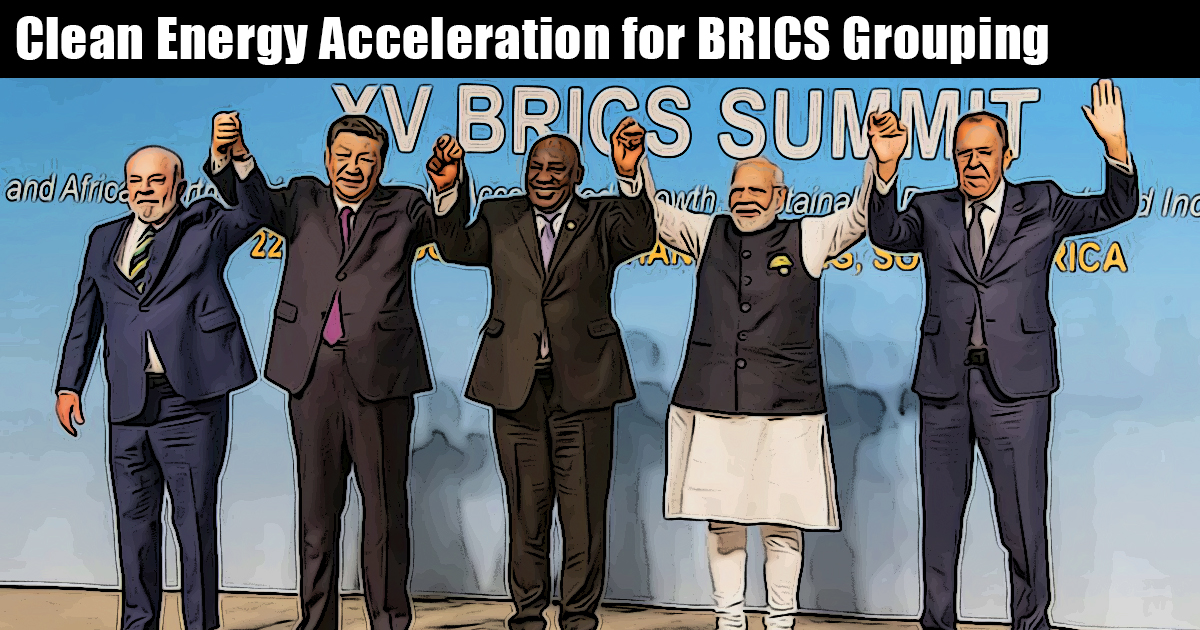
Context: A report from the Global Energy Monitor indicates that BRICS nations are expected to see their fossil fuel capacity drop below 50% of their total installed power capacity by the end of 2024.
Key Findings:
- Decline in Fossil Fuel Share: The share of coal, oil, and gas in the BRICS power mix is projected to fall below 50% by the end of 2024. However, most BRICS nations are still building new coal, oil, or gas plants despite this shift.
- Growth in Renewables: Wind and utility-scale solar projects under development outnumber fossil-fuel power projects by a ratio of two to one in the BRICS countries.
- Renewable Energy Capacity: BRICS nations are on track to nearly triple their renewable energy capacity by 2030, aligning with global clean energy targets set at COP28. Their total renewable energy capacity could increase by 2.5 times by the decade’s end.
Relevance of BRICS in Clean Energy Transition:
- Global Power Capacity: BRICS nations account for half of the world’s power capacity, making them key players in the global transition to clean energy.
- Coal Dependency: China, India, and South Africa rely heavily on coal, with coal accounting for 41%, 51%, and 70% of their power capacity, respectively.
- Oil and Gas Producers: Russia, Egypt, Iran, and the UAE rank among the top ten oil and gas producers globally, underscoring the challenge of transitioning away from fossil fuels in these nations.




